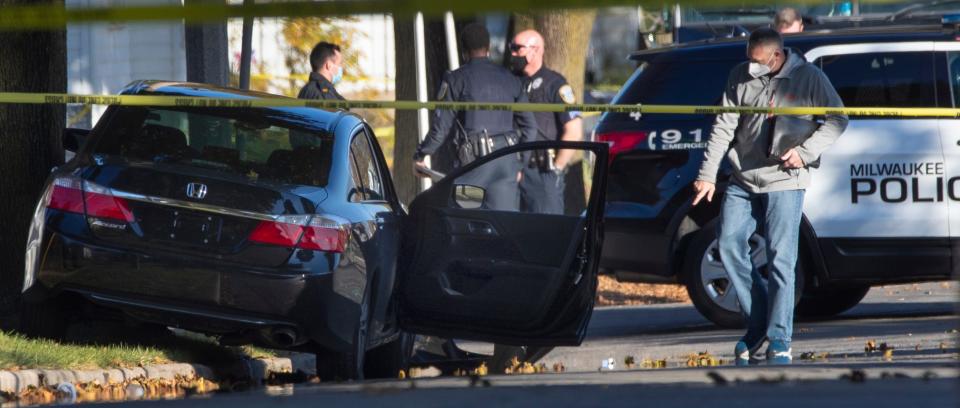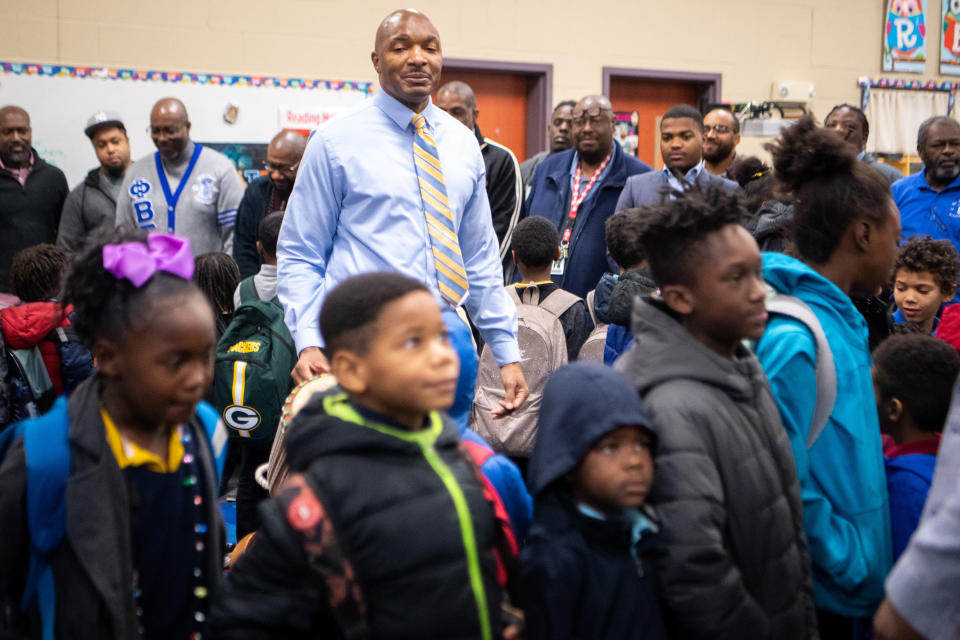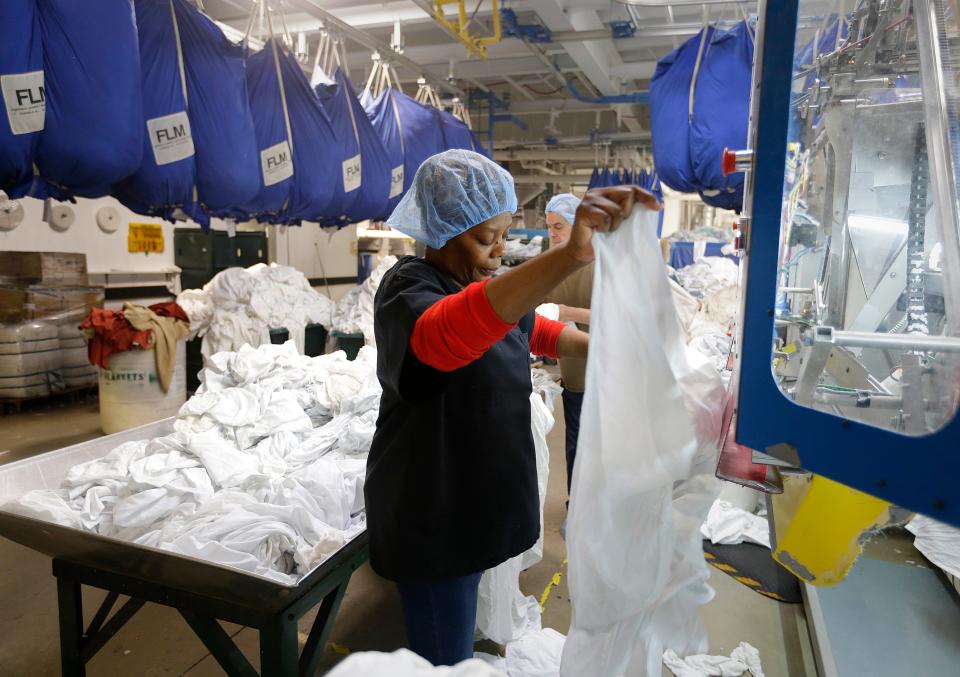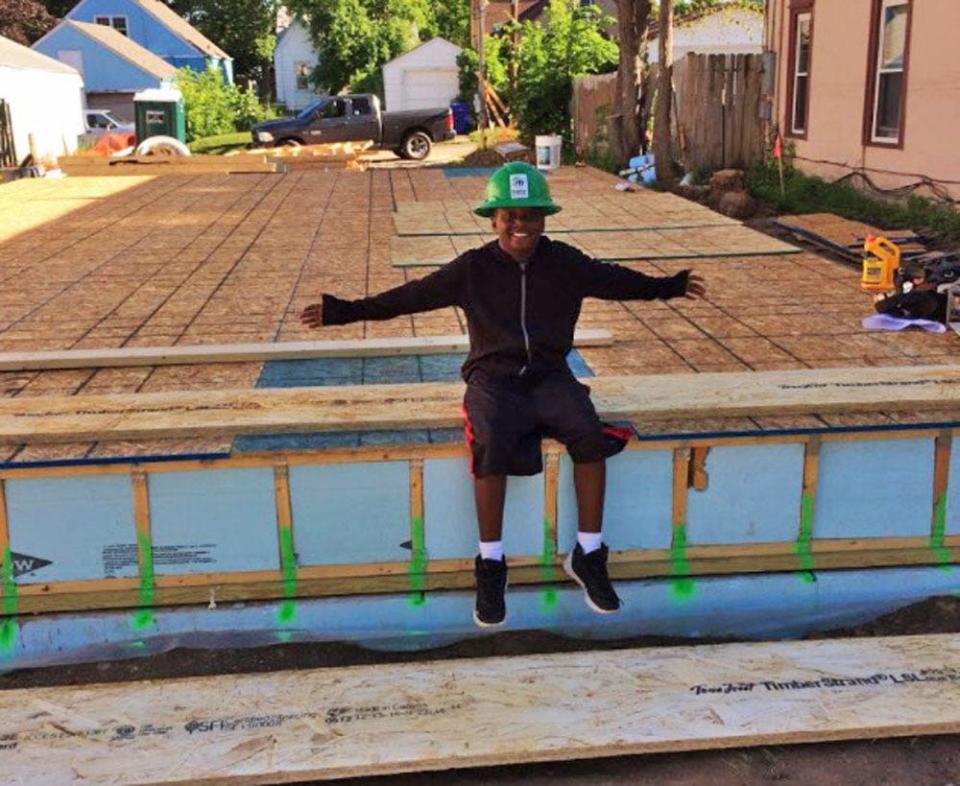If I was running for mayor of Milwaukee, I'd focus on these four things
I'm not running for mayor. But if I was, this would be my elevator speech:
“I was born and raised in Milwaukee. My parents lived in 53206 and raised me there.
"They purchased their first and only home on the city’s northwest side, a home I still live in. My father worked in manufacturing. My mother worked on the line at Koss Corp.
"I remember what Milwaukee used to be. I want to see it get back to a place where families made a living wage. Where they owned their homes. Where crime was low and people felt safe."
If I was running for mayor, I wouldn’t care much about being liked. I’d stick to my agenda. You can't satisfy everyone so don't try.
Milwaukee had 17 years of that with Tom "Mr. Nice Guy” Barrett.
There are some reasons to be optimistic about Milwaukee's future. For one, I'm confident the next mayor will be more proactive than Barrett, and Milwaukee received nearly $400 million in COVID-19 funding last year. That could help solve some of the problems.
I think this city should fully implement the Blueprint for Peace, a violence reduction plan; it should mentor more Black and Brown boys with a sharp focus on literacy; it should adopt the Evergreen Cooperative idea and put those businesses at the moribund Century City business park; and it should encourage Habitat for Humanity to expand minority homeownership.
But before we do any of that, we first have to get control of the streets.
More: From vaccines to mask mandates, here's how Milwaukee's mayoral candidates would approach COVID-19

Take steps now to reduce crime in Milwaukee
In Milwaukee at the moment, criminals are mocking police, and innocent people feel like they are on house arrest — stuck in their homes because it's not safe to be outside.
Homicides are up more than 120% as of Jan. 30, compared to the same time last year. That includes the six people found shot dead execution-style recently in a home on N. 21st and W. Wright streets.
We can adopt stricter gun laws, but even New York City, which has one of the strongest gun laws on the books, has seen a spike in violent crime. Two officers were killed in a recent shooting.
I think a public health approach works best, and that means fully funding the city’s “Blueprint for Peace.”
This strategy, put together by the Office of Violence Prevention in 2017, focuses on six broad strategies: stop gun violence; promote healing and restorative justice; support children, youth and families; promote economic opportunity; foster safe neighborhoods; and strengthen violence prevention.
The blueprint recognizes that although violence affects the entire community, it takes a huge toll on specific neighborhoods and populations, including youth, women, and people of color.
Up to now, there has never been a real commitment to fully fund the strategies, so we haven’t seen its full potential. With $394 million in COVID-19 relief pouring into the city, it's time to put that money down on crime reduction.
It would take $15 million to $20 million to be fully implemented, according to those working at the Office of Violence Prevention. I think it's worth it.
Among its tactics: sending violence interrupters to stop brewing arguments from turning into violent shootings.
Supporting the blueprint doesn’t mean defunding police. Violence prevention with a strong public health underpinning can work in tandem with police. The mayor needs to give monthly updates on the city’s progress.
Make sure that Milwaukee's children can read

When I was in school, the kids who acted up the most were usually the ones who struggled with reading. They were the kids who used to read with their fingers under every word. When they got to a word they couldn’t make out, they would get frustrated.
Many of the city's problems stem from the fact that many of our Black and brown boys don’t read well. Teachers know this. But these students too often are passed onto the next grade anyway
Stop passing kids you know are behind. It sets them up for a lifetime of failure. If they can’t read, nothing else will matter. They will be on the road to dropping out and a life of unemployment or low-paying, dead-end jobs.
In Milwaukee Public Schools, only half of the Black boys who are freshmen today, will walk across the stage in four years. Wisconsin has the highest percentage of Black fourth graders with skills considered below basic — 69%. In reading alone, Black students in Wisconsin trail every other state and the District of Columbia.
Former Milwaukeean, Michael Pratt, who is an educator in Nashville, Tenn., noticed the troubling trend. He conducted his own study, asking boys why they didn’t like to read. Most of them said they didn’t like reading because they didn’t see Black men around them reading. Many didn’t have books in their homes.
Pratt, the son for former acting Mayor Marvin Pratt, said that prompted him to start the grassroots mentorship and reading program he calls “Fatherhood Fridays.”
When I went to Nashville, to see the program in action I was impressed by its simplicity.
Pratt, who is my Phi Beta Sigma fraternal brother, got Black men to agree to go with him into a school once a month to read to Black boys.
What started with a handful one month turned into more than 50 men strong after a few months.
And it's not just about reading. They have breakfast with the kids and talk with them about what they do for a living.
School attendance increases the week the men show up and behavior improves for weeks after the men leave. The kids get free books to take home, gifts from their mentors.
I challenge the Divine Nine — Black fraternities and sororities — in the Milwaukee area to each adopt a school or two and read to youth. MPS should streamline the process for volunteers who want to help out.
Milwaukee should adopt a good idea from Cleveland

For more than five years, I have written about the Evergreen Cooperative Initiative out of Cleveland. The cooperative is a great way to address a decaying economy in Black and brown neighborhoods.
Years before former Mayor Tom Barrett departed for Luxemburg, he said he wanted to turn the Century City development (the former home of Tower Automotive) into the Menomonee Valley of the north side. He told me that he could envision the area booming with businesses.
It never happened.
The mayor and others worried that crime in the area was a deterrent to development.
But that was not a problem in the late 1970s and 1980s. With manufacturing booming, The New York Times once called Milwaukee one of the best places to live if you were African American.
Many of those factory workers lived just blocks from where they worked. They were homeowners. They shopped at Capitol Court, went to the movie theater there, attended neighborhood churches.
Today, Century City, where thousands once worked, is home to fewer than 100 employees.
The area is primed for an Evergreen Cooperative approach.
In Cleveland, the mayor also saw a drastic decline in manufacturing. Factories shut down, whites fled to the suburbs, crime went up and minority homeownership went down.
The only constant in Cleveland was its anchor institutions — businesses that could not leave — Cleveland Foundation, Cleveland Clinic, University Hospitals, Case Western Reserve University.
These institutions leveraged their power to bolster areas of the city that had been neglected. It took time and a lot of trust, but they soon realized they were sending a lot work outside of the city that could be done there.
Like laundry.
The partnership built a large laundry facility in the heart of Cleveland and hired workers from the area, many whom had trouble finding employment. Along with a living wage, the cooperative provided an opportunity for employees to own a home in the neighborhood after five years of employment.
The businesses saved money by not outsourcing their laundry, and they made a local impact by hiring from the community.
What started as just a laundry facility now has a large greenhouse that produces lettuce year round for Cleveland area restaurants, schools, and grocery stores and a solar panel farm that helps to lower energy costs on every building the panels are placed.
The cooperative is employing hundreds while improving neighborhoods and the health of those who work there.
Milwaukee ranks near the bottom of the nation’s cities for the percentage of African Americans earning $40,000 or more a year, according to the 2020 University of Wisconsin-Milwaukee report. This idea could help.
In 2017, all members of the Milwaukee Common Council signed a resolution saying they supported the idea of a cooperative.
Nothing happened.
The new mayor should rally support for this transformative idea.
Let's revamps the Habitat program here

I know what stable housing has done for me. My parents worked hard to keep a roof over my head. But 5,000 children in Milwaukee Public Schools don’t know have any idea what it’s like to have stable housing.
Owning a home has long been the primary gateway to a stable, middle class life in America. But Black homeownership in Milwaukee has never been above 50%, even when Black employment was at its highest during the late 1970s.
Part of the reason African American homeownership never grew much in Milwaukee is due to the racist policies which kept minorities out of certain neighborhoods.
It took more than half a year of marching, the killing of Martin Luther King Jr., lawsuits, and civil unrest to enact fair housing laws in 1968. But even then, restrictive loan policies by lending institutions made it difficult for Blacks to get financing to buy homes in certain neighborhoods.
The Twin-Cities Habitat for Humanity program is a national leader because it takes a comprehensive approach to affordable housing by covering the entire metropolitan area of seven counties. In contrast, southeast Wisconsin is splintered into seven separate Habitat operations, weakening the impact.
If I was mayor, I would push for Milwaukee to take a regional approach to its Habitat program, to have one housing director for clearer leadership to improve housing for low-income families.
Adopting this approach would put more families into homes each year, and it would diversify neighborhoods at a faster clip, addressing Milwaukee's chronic segregation problem.
It's a fact: 26% of Milwaukee’s Black residents live in neighborhoods defined as having concentrated poverty, compared to 10% of the area’s poor white non-Hispanic residents.
The Twin Cities approach would allow more homeowners to live closer to where they work and closer to a better school. Funding could be better targeted. And the pool of participants could be larger.
I will be moderating a candidates forum with WTMJ-4 Charles Benson at 7 p.m. Feb. 9 at Turner Hall Ballroom. It will be streamed live over our Facebook page and on YouTube.

James E. Causey started reporting on life in his city while still at Marshall High School through a Milwaukee Sentinel high school internship. He's been covering his hometown ever since, writing and editing news stories, projects and opinion pieces on urban youth, mental health, employment, housing and incarceration. Most recently, he wrote "What happened to us?" which tracked the lives of his third-grade classmates, and "Cultivating a community," about the bonding that takes place around a neighborhood garden. Causey was a health fellow at the University of Southern California in 2018 and a Nieman Fellow at Harvard University in 2007.
Email him at jcausey@jrn.com and follow him on Twitter: @jecausey.
This article originally appeared on Milwaukee Journal Sentinel: Four things the new Milwaukee mayor should focus campaign on

